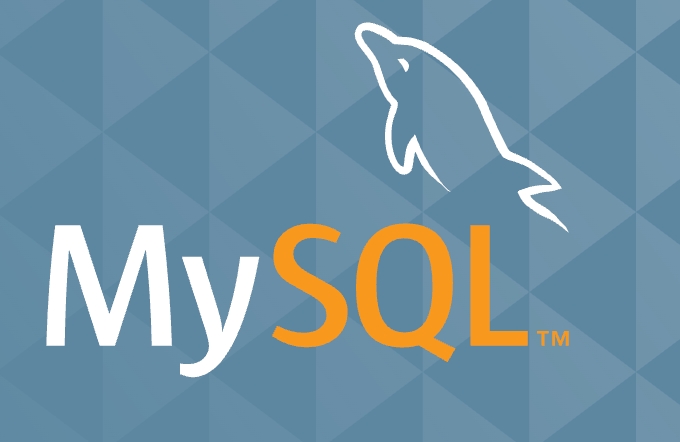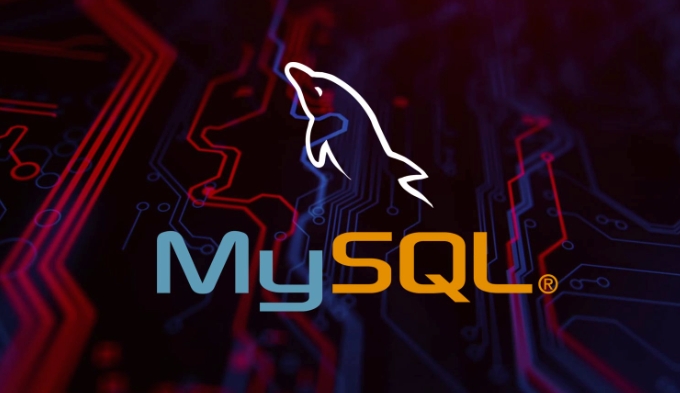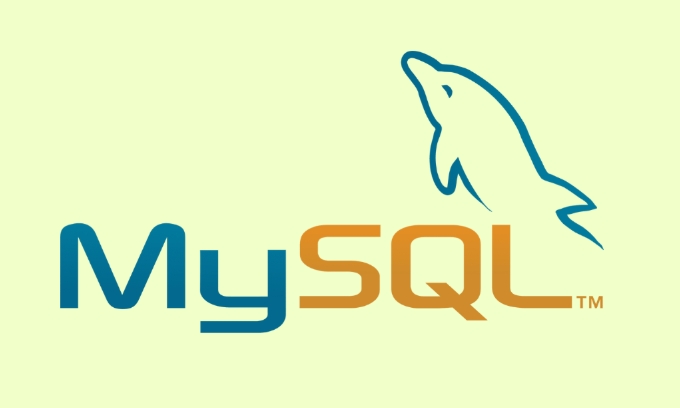To automate MySQL patching and maintenance, the key is to establish stable and repeatable processes. First, you need to choose the appropriate tools, such as Ansible, suitable for lightweight deployment, Puppet and Chef are more suitable for complex environments, and ensure that they support version control and rollback mechanisms, combining cron or CI/CD to improve execution efficiency; second, you need to clarify the scope of automation tasks, including daily table optimization, weekly backup verification, monthly slow query analysis and log cleaning, and add exception detection and status records; patch updates must be verified in the test environment first, and then scripts are written to operate online, backup data before update, check logs after update, and the source of the patch must be trustworthy; finally, the monitoring and notification mechanism must be configured, and use tools such as Prometheus, Grafana, Nagios to display and alert push to ensure that problems are discovered and processed in a timely manner.

MySQL patching and maintenance automation are actually not that mysterious. The key is to establish a stable and repeatable process. Manual operation is prone to errors, especially when it comes to multiple servers. By using the right tools, writing scripts, and doing good tests, you can do this quickly and well.

Choosing the right tool is the first step
To achieve automation, you must first choose a tool that can support daily maintenance and patch updates. Commonly used configuration management tools such as Ansible, Chef, and Puppet are all competent. Ansible is lightweight and does not require a client installation, which is suitable for rapid deployment; while Puppet and Chef are more suitable for long-term and complex environmental management.
- If you only have a few servers, Ansible is a good choice
- It is recommended to consider Puppet or Chef for unified management in large-scale deployment.
- No matter which tool you use, make sure it supports MySQL version control and rollback mechanisms.
In addition, maintenance operations can also be triggered in combination with cron timing tasks or CI/CD pipelines, which can be performed regularly and notified automatically.

What should I do for automated maintenance
Not everything is suitable for automation, but regular tasks like backup, index optimization, log cleaning are suitable. The key is to set a reasonable frequency and add an abnormality detection mechanism.
for example:

- Table optimization and analysis once a morning run every day
- Make a full backup once a week and verify availability
- Check slow query logs every month to generate reports
- Automatically clean up expired binlogs and error logs
These tasks can be accomplished through the script scheduler. Note that it is best to record the status after each operation. If there is an alarm if it fails, otherwise automation will become a hidden danger.
How to update the patch safely
MySQL updates cannot be directly "one-click upgrade", especially in production environments. The correct way is to verify patch compatibility in the test environment first, and then gradually go online.
You can do this:
- Use mirrors or containers to build a test database similar to the production environment
- Perform patch updates in the test environment to observe whether there are any errors or performance changes
- After confirmation, write an update script for use in the official environment
- Be sure to back up the data before update, restart the service and check the log after update
The source of the patch package is also important. It is recommended to obtain it from official sources or trusted repositories to avoid using third-party unverified binary files.
Monitoring and notifications must not be missing
After the automation system starts running, the most feared thing is to fail quietly. Therefore, monitoring and notification mechanisms must keep up. You can use Prometheus Grafana as indicator display, and use Nagios, Zabbix, Slack, or email as notifications.
- Set key indicator thresholds (such as CPU, memory, connection count)
- Send a brief report after the update is completed
- An alarm will be triggered immediately after an error occurs
Sometimes a small problem turns into a big failure because no one finds it. Set up notification rules in advance to save worry.
Basically that's it. After all, automation is not for showing off skills, but for stability and efficiency. With the details and clear processes, MySQL maintenance can be easier.
The above is the detailed content of Automating MySQL Patching and Maintenance. For more information, please follow other related articles on the PHP Chinese website!

Hot AI Tools

Undress AI Tool
Undress images for free

Undresser.AI Undress
AI-powered app for creating realistic nude photos

AI Clothes Remover
Online AI tool for removing clothes from photos.

Clothoff.io
AI clothes remover

Video Face Swap
Swap faces in any video effortlessly with our completely free AI face swap tool!

Hot Article

Hot Tools

Notepad++7.3.1
Easy-to-use and free code editor

SublimeText3 Chinese version
Chinese version, very easy to use

Zend Studio 13.0.1
Powerful PHP integrated development environment

Dreamweaver CS6
Visual web development tools

SublimeText3 Mac version
God-level code editing software (SublimeText3)
 Performing logical backups using mysqldump in MySQL
Jul 06, 2025 am 02:55 AM
Performing logical backups using mysqldump in MySQL
Jul 06, 2025 am 02:55 AM
mysqldump is a common tool for performing logical backups of MySQL databases. It generates SQL files containing CREATE and INSERT statements to rebuild the database. 1. It does not back up the original file, but converts the database structure and content into portable SQL commands; 2. It is suitable for small databases or selective recovery, and is not suitable for fast recovery of TB-level data; 3. Common options include --single-transaction, --databases, --all-databases, --routines, etc.; 4. Use mysql command to import during recovery, and can turn off foreign key checks to improve speed; 5. It is recommended to test backup regularly, use compression, and automatic adjustment.
 Calculating Database and Table Sizes in MySQL
Jul 06, 2025 am 02:41 AM
Calculating Database and Table Sizes in MySQL
Jul 06, 2025 am 02:41 AM
To view the size of the MySQL database and table, you can query the information_schema directly or use the command line tool. 1. Check the entire database size: Execute the SQL statement SELECTtable_schemaAS'Database',SUM(data_length index_length)/1024/1024AS'Size(MB)'FROMinformation_schema.tablesGROUPBYtable_schema; you can get the total size of all databases, or add WHERE conditions to limit the specific database; 2. Check the single table size: use SELECTta
 Handling character sets and collations issues in MySQL
Jul 08, 2025 am 02:51 AM
Handling character sets and collations issues in MySQL
Jul 08, 2025 am 02:51 AM
Character set and sorting rules issues are common when cross-platform migration or multi-person development, resulting in garbled code or inconsistent query. There are three core solutions: First, check and unify the character set of database, table, and fields to utf8mb4, view through SHOWCREATEDATABASE/TABLE, and modify it with ALTER statement; second, specify the utf8mb4 character set when the client connects, and set it in connection parameters or execute SETNAMES; third, select the sorting rules reasonably, and recommend using utf8mb4_unicode_ci to ensure the accuracy of comparison and sorting, and specify or modify it through ALTER when building the library and table.
 Implementing Transactions and Understanding ACID Properties in MySQL
Jul 08, 2025 am 02:50 AM
Implementing Transactions and Understanding ACID Properties in MySQL
Jul 08, 2025 am 02:50 AM
MySQL supports transaction processing, and uses the InnoDB storage engine to ensure data consistency and integrity. 1. Transactions are a set of SQL operations, either all succeed or all fail to roll back; 2. ACID attributes include atomicity, consistency, isolation and persistence; 3. The statements that manually control transactions are STARTTRANSACTION, COMMIT and ROLLBACK; 4. The four isolation levels include read not committed, read submitted, repeatable read and serialization; 5. Use transactions correctly to avoid long-term operation, turn off automatic commits, and reasonably handle locks and exceptions. Through these mechanisms, MySQL can achieve high reliability and concurrent control.
 Managing Character Sets and Collations in MySQL
Jul 07, 2025 am 01:41 AM
Managing Character Sets and Collations in MySQL
Jul 07, 2025 am 01:41 AM
The setting of character sets and collation rules in MySQL is crucial, affecting data storage, query efficiency and consistency. First, the character set determines the storable character range, such as utf8mb4 supports Chinese and emojis; the sorting rules control the character comparison method, such as utf8mb4_unicode_ci is case-sensitive, and utf8mb4_bin is binary comparison. Secondly, the character set can be set at multiple levels of server, database, table, and column. It is recommended to use utf8mb4 and utf8mb4_unicode_ci in a unified manner to avoid conflicts. Furthermore, the garbled code problem is often caused by inconsistent character sets of connections, storage or program terminals, and needs to be checked layer by layer and set uniformly. In addition, character sets should be specified when exporting and importing to prevent conversion errors
 Connecting to MySQL Database Using the Command Line Client
Jul 07, 2025 am 01:50 AM
Connecting to MySQL Database Using the Command Line Client
Jul 07, 2025 am 01:50 AM
The most direct way to connect to MySQL database is to use the command line client. First enter the mysql-u username -p and enter the password correctly to enter the interactive interface; if you connect to the remote database, you need to add the -h parameter to specify the host address. Secondly, you can directly switch to a specific database or execute SQL files when logging in, such as mysql-u username-p database name or mysql-u username-p database name
 Setting up asynchronous primary-replica replication in MySQL
Jul 06, 2025 am 02:52 AM
Setting up asynchronous primary-replica replication in MySQL
Jul 06, 2025 am 02:52 AM
To set up asynchronous master-slave replication for MySQL, follow these steps: 1. Prepare the master server, enable binary logs and set a unique server-id, create a replication user and record the current log location; 2. Use mysqldump to back up the master library data and import it to the slave server; 3. Configure the server-id and relay-log of the slave server, use the CHANGEMASTER command to connect to the master library and start the replication thread; 4. Check for common problems, such as network, permissions, data consistency and self-increase conflicts, and monitor replication delays. Follow the steps above to ensure that the configuration is completed correctly.
 Strategies for MySQL Query Performance Optimization
Jul 13, 2025 am 01:45 AM
Strategies for MySQL Query Performance Optimization
Jul 13, 2025 am 01:45 AM
MySQL query performance optimization needs to start from the core points, including rational use of indexes, optimization of SQL statements, table structure design and partitioning strategies, and utilization of cache and monitoring tools. 1. Use indexes reasonably: Create indexes on commonly used query fields, avoid full table scanning, pay attention to the combined index order, do not add indexes in low selective fields, and avoid redundant indexes. 2. Optimize SQL queries: Avoid SELECT*, do not use functions in WHERE, reduce subquery nesting, and optimize paging query methods. 3. Table structure design and partitioning: select paradigm or anti-paradigm according to read and write scenarios, select appropriate field types, clean data regularly, and consider horizontal tables to divide tables or partition by time. 4. Utilize cache and monitoring: Use Redis cache to reduce database pressure and enable slow query






